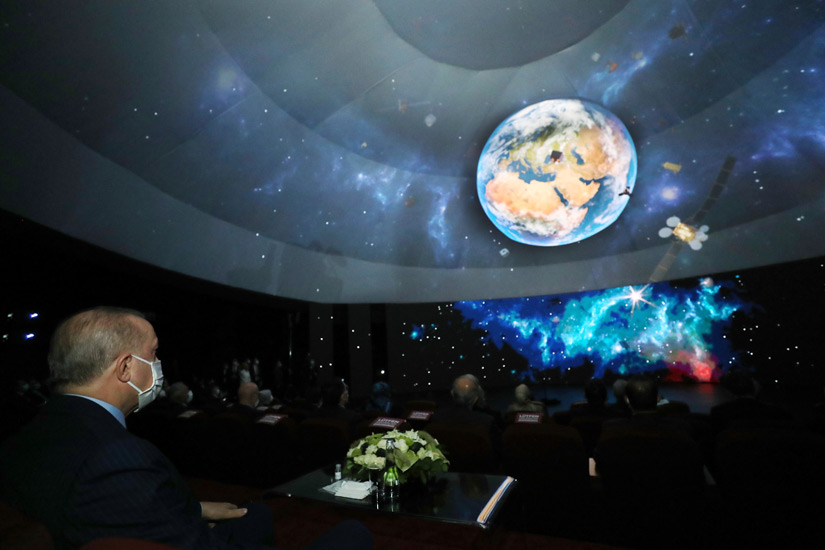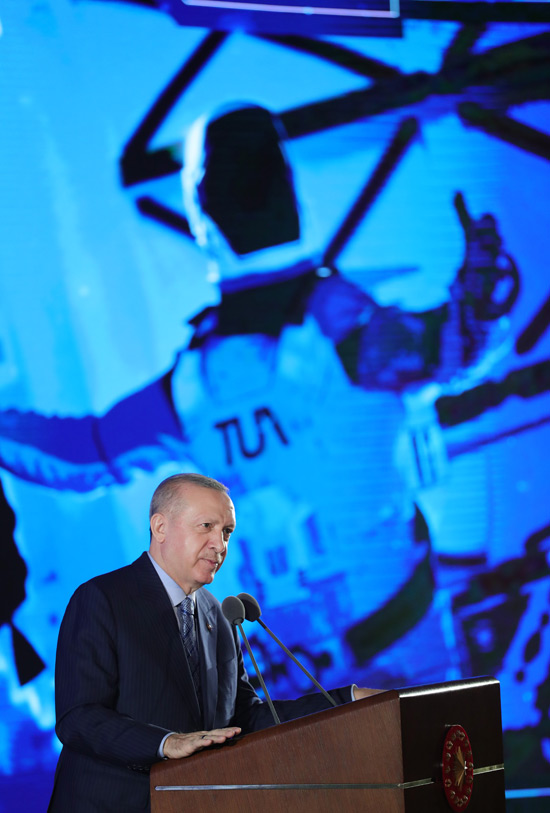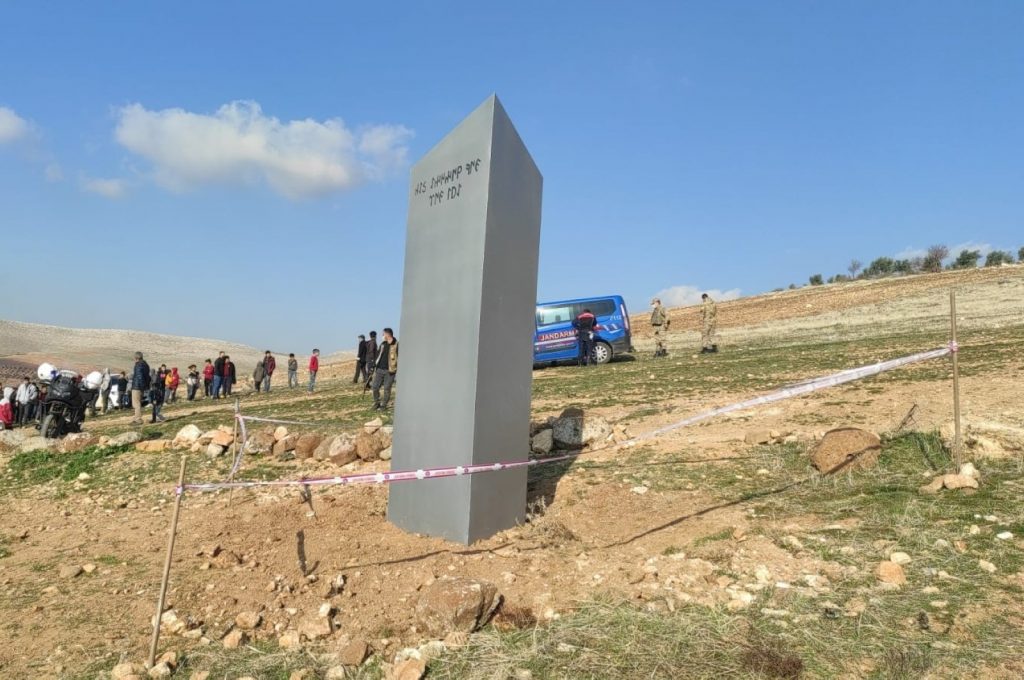When a grey triangular metal structure randomly appeared in the countryside in southeast Turkey, not far from the ancient site of Göbekli Tepe where the world’s oldest temple stands, locals were flummoxed. What was it? How had it got there and for what reason?
The 3-dimensional, 3-metre tall by about 50 centimetres wide monument was found in a field about 20 kilometres from the nearest city, Şanlıurfa, on Friday, 5 February. An inscription on the structure, written in ancient Göktürk script, read: ‘Look at the sky if you want to see the moon.’
As news circulated of the discovery, the monolith was taped off and quickly put under armed guard, as hundreds of curious people flocked to see it.
Similar metal pillars have appeared suddenly in other parts of the world, including on a beach on the Isle of Wight, in an American desert, and on a Romanian hillside.
The first one was discovered on 18 November of last year. A crew on board a helicopter on a sheep-counting mission were flying over a remote part of a desert in Utah when they spotted a strange monument below. Then, on 27 November, the metal monolith disappeared just as mysteriously as it appeared.
While some turned out to be a prank, like the Isle of Wight monolith created by a local designer “for fun”, there has been no explanation for many others.
Mystery monolith appears at world’s oldest temple – Göbeklitepe (dating back to the 11th–8th millennium BCE) – in Turkey. Experts said the inscription on the slab was in the ancient Göktürk alphabet and meant “Look at the sky if you want to see the Moon.” pic.twitter.com/XqpHINBCqn
— ₵ Ɇ ₦ ł ₦ (@ceninvoncatlien) February 5, 2021
The mystery surrounding the Göbekli Tepe monolith was, however, unravelled four days after it was found.
On Tuesday, 9 February – the day the structure suddenly disappeared from – Turkey’s President Recep Tayyip Erdoğan launched Turkey’s National Space Programme in Ankara.
An image of the Göbekli Tepe monolith appeared on a screen behind the president just as he repeated the words on the inscription: ‘Look at the sky if you want to see the moon.’


President Erdoğan went on to set out his ambitious 10-year plan to send Turkish astronauts into space.
The first phase will be to launch a Turkish rocket in 2023, which will coincide with the centenary of the Turkish republic.
“The first rough landing will be made on the moon with our national and authentic hybrid rocket that shall be launched into orbit at the end of 2023 through international cooperation,” said the president. “God willing, we are going to the moon,” he added.
President Erdoğan also plans to build a spaceport and to create a “global brand” in satellite technology. He said that TÜRKSAT 6-A will be Turkey’s first indigenously produced communications satellite, and will be sent to into orbit in 2022.





